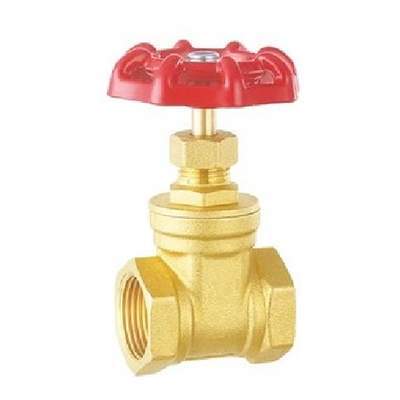Welcome to My Blog!
Before we dive into the content, I’d love for you to join me on my social media platforms where I share more insights, engage with the community, and post updates. Here’s how you can connect with me:
Facebook:https://www.facebook.com/profile.php?id=61563865935136
Now, let’s get started on our journey together. I hope you find the content here insightful, engaging, and valuable.
Introduction

In the vast realm of industrial and residential applications, the importance of reliable and efficient fluid control cannot be overstated. Among the various components that contribute to this control, the copper valve stands out for its durability, conductivity, and overall performance. This comprehensive guide aims to delve into the intricacies of the copper valve, exploring its applications, benefits, and maintenance requirements, ensuring you achieve peak performance in your systems. Understanding the properties of a copper valve is crucial for any application involving liquid or gas flow. Copper valves offer a superior solution due to their material properties.
The Material Advantages of Copper Valve
Copper, as a material, possesses several intrinsic qualities that make it an ideal choice for valve construction. Its high thermal and electrical conductivity ensures efficient heat transfer and minimal energy loss. Furthermore, copper’s natural resistance to corrosion, particularly in water-based systems, prolongs the lifespan of the valve and reduces maintenance costs. The inherent antimicrobial properties of copper also contribute to a cleaner and safer fluid environment, making the copper valve a preferred option in various sanitary applications. Selecting the correct valve will improve any system.
Types of Copper Valve and Their Applications
The versatility of the copper valve is evident in its wide range of types, each designed to cater to specific applications. Ball valves, for instance, are known for their quick shut-off capabilities and are commonly used in plumbing and gas lines. Gate valves, on the other hand, are preferred for their minimal flow restriction and are often employed in large-scale water distribution systems. Globe valves offer precise flow regulation, making them suitable for applications where fine-tuning is essential. Check valves prevent backflow, ensuring unidirectional fluid movement. Each valve type has specific benifits.
- Ball Valves: Quick shut-off, ideal for plumbing and gas lines.
- Gate Valves: Minimal flow restriction, used in large water distribution.
- Globe Valves: Precise flow regulation, for fine-tuning applications.
- Check Valves: Prevents backflow, ensures unidirectional movement.
- Butterfly Valves: Large diameter applications, efficient flow control.
Installation Best Practices for Valve
Proper installation is paramount to ensure the longevity and efficiency of a valve. Before installation, it is crucial to thoroughly clean the pipes to remove any debris that could damage the valve or impede flow. Using the correct tools and fittings is essential to prevent leaks and ensure a secure connection. It is also important to adhere to the manufacturer’s guidelines regarding torque specifications to avoid over-tightening, which can lead to valve damage. Proper valve alignment is required. valve installation can be tricky.
Maintenance and Troubleshooting Valve Issues

Regular maintenance is key to prolonging the life of a copper valve. Periodic inspections can help identify potential issues such as leaks, corrosion, or wear and tear. Cleaning the valve and its components can prevent buildup and ensure smooth operation. In the event of a leak, tightening the connections or replacing worn seals may resolve the issue. If the valve fails to open or close properly, it may be necessary to disassemble and clean or replace the internal components. Proper maintenance will prevent valve failure.
Optimizing Performance: Flow Rate and Pressure Considerations
Achieving optimal performance with a copper valve involves careful consideration of flow rate and pressure. The valve’s size and design must be appropriate for the system’s flow requirements to avoid pressure drops or flow restrictions. Understanding the system’s pressure ratings and selecting a valve that can handle those pressures is crucial for safety and efficiency. Implementing flow control strategies, such as using pressure regulators or flow meters, can help maintain consistent performance. valve flow control is important.
Copper Valve in Industrial Applications
In industrial settings, the reliability of a valve is critical. These valves are used in a variety of applications, including chemical processing, oil and gas, and manufacturing. Their ability to withstand high pressures and temperatures, along with their resistance to corrosive substances, makes them an indispensable component in these demanding environments. Industries rely on valve quality.
Valve in Residential Plumbing Systems
In residential plumbing systems, the valve plays a vital role in water distribution and control. From main water shut-off valves to individual fixture valves, these components ensure efficient water flow and prevent leaks. Their durability and resistance to corrosion make them a long-lasting and reliable choice for homeowners. Homes use many valve products.
Comparison of Valve with Other Materials
While other materials like brass, stainless steel, and PVC are also used in valve construction, the valve offers a unique set of advantages. Brass, though similar in appearance, may contain lead, which can leach into drinking water. Stainless steel offers excellent corrosion resistance but is more expensive. PVC is cost-effective but lacks the durability and temperature resistance of copper. The copper valve offers a great mix of value and performance.
Copper Valve Performance Metrics
Here is a table showing general performance metrics for copper valves.
| Metric | Measurement | Typical Range |
|---|---|---|
| Pressure Rating | PSI | 125 to 600 |
| Temperature Rating | °F | -20 to 400 |
| Flow Coefficient (Cv) | Gallons per minute | Varies by size and type |
| Corrosion Resistance | Scale 1-10 | 8 |
| Thermal Conductivity | W/mK | 398 |
Environmental Impact and Sustainability of Valve

Copper is a recyclable material, making the copper valve an environmentally friendly choice. Its long lifespan and low maintenance requirements also contribute to sustainability. Furthermore, the antimicrobial properties of copper reduce the need for chemical treatments in water systems, minimizing environmental impact. The valve is a good choice for green projects.
Conclusion
The copper valve is a cornerstone of efficient fluid control, offering a blend of durability, performance, and sustainability. Understanding its various types, applications, and maintenance requirements is crucial for achieving peak performance in any system. By adhering to best practices and staying informed about technological advancements, you can ensure the longevity and reliability of your copper valve systems. For all your valve needs, contact us today to learn how our superior products can enhance your systems.
FAQ
What are the primary advantages of using a copper valve?
Copper valves offer excellent thermal and electrical conductivity, corrosion resistance, and antimicrobial properties.
How often should a valve be inspected?
Regular inspections, ideally every six months to a year, are recommended to ensure optimal performance.
Can copper valves be used in high-temperature applications?
Yes, copper valves can withstand high temperatures, but it is essential to check the manufacturer’s specifications.
What are the common signs of a faulty valve?
Common signs include leaks, difficulty opening or closing, and visible corrosion.
